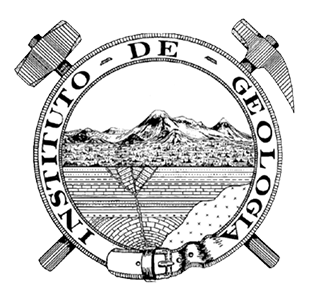Abstract
The Mesa Central (MC) of México is a physiographic province that consists of an elevated region with an average elevation of ~2000 m a.s.l. It has two zones with different morphology: the northern part, with extensive plains and quite eroded hills, and the southern part, with a more abrupt morphology formed by mountain ranges limited by fluvial-lacustrine valleys. This paper presents an update of the stratigraphic, structural, and tectonic information of the Cenozoic of the MC. In the last fifteen years, a large number of isotopic ages, geological cartography, and fault descriptions have been generated, which contributed to a substantial advancement in the knowledge of the tectonic evolution of this region of Mexico. We have organized the Cenozoic stratigraphy into six chronostratigraphic units, all of which are continental and most of which are volcanic. Two units are made up of clastic sediments that fill grabens. The oldest is of Paleogene age and contains volcanic rocks. The second represents the sedimentation coeval with a long extensional tectonic phase of Chattian-Neogene age. An unconformity between the Rupelian and the Chattian coincides with a change in the composition of magmatic rocks and the deformation style.
The MC has undergone at least three phases of exhumation: (1) at the end of the construction of the Mexican Orogen (Late Cretaceous-Paleocene); (2) during the Eocene, at the beginning of the extensional phase of the MC; and (3) during the Oligocene, recorded in the Rupelian-Chattian unconformity that is observed throughout the southern part of the MC. This unconformity separates layers with different structural styles; below it, the rocks were deformed by extension with 2D-rotational “domino-like” faulting; above the unconformity, the deformation is 3D-irrotational, with the development of a polymodal fault system. The 2D deformation had a NE direction of maximum horizontal elongation, parallel to the convergence vector of the plates in the Mexican Pacific for that time. On the other hand, in the 3D deformation, the maximum horizontal elongation was oriented between E and SE. The elongation direction and the faulting style changes suggest that plate dynamics on the Pacific coast no longer dominated the deformation of the MC and were mainly influenced by the arrival of a slab window under the MC at ca. 30 Ma, as proposed by Ferrari et al. (2018, Earth Sci. Rev., 183, 115-152). We interpret that the slab window allowed the rise of asthenospheric material, producing a dome-shaped elevation of the isotherms. Consequently, the extensional deformation became three-dimensional and was accommodated by the polymodal fault pattern observed in the southern part of the MC. Noteworthy, among the Oligocene volcanic rocks there is no geochemical evidence of adakitic rocks, Nb-enriched basalts, tholeiitic basalts or magnesium-rich andesites. There are clues that the crustal thickness of the MC varies between the major fault zones and the blocks they separate. The reported thicknesses are between 30 km and 40 km. The Cenozoic geological history of the MC indicates that extension in this region has been under way for ca. 48 Myr. During this lapse, granulitization events (UHT metamorphism) and partial melting have occurred in the lower part of the crust. Data from Miocene-aged crustal xenoliths (sedimentary protolith) indicate temperatures between 872 °C and 969 °C, and calculated depths for the lower crustal zone in the eastern part of the MC are between 25 km and 33 km.
The state of erosion in most of the MC indicates little or no recent tectonic and magmatic activity. However, active zones with Pliocene-Quaternary magmatism exist in Durango and San Luis Potosí, where active seismicity has been documented. A spatial coincidence exists between the major faults documented in the geological cartography and the epicenters recorded in local seismic campaigns.

This work is licensed under a Creative Commons Attribution-NonCommercial 4.0 International License.
Copyright (c) 2023 Revista Mexicana de Ciencias Geológicas








